4 Strategies for Differentiated Imagery in Your Sustainability/ESG Communications
While sustainability/ESG storytelling relies on words, the images you choose ultimately help or hinder your communications. Proprietary imagery will build your brand, add depth to your content, and differentiate you from your peers.
When companies struggle to bring their purpose, mission and vision to life visually, images tend to look generic. This may seem harmless, but it creates a gap in how audiences perceive your company and your messages. Use your company’s brand and ethos as a starting point, dig deep to understand your core audiences and what images engage them and connect your content.
Here are four strategies to help you create dynamic, ownable visuals to use in your sustainability/ESG communications and beyond.
1. Create original photos that relate specifically to the stories you are telling.
Plan a photoshoot and hire a professional photographer to get the best results. Take photos well ahead of any publication date. Opt for a photographer who has experience capturing a range of settings and is nimble in their process. Use your sustainability, CSR, DEI or ESG goals as a guide to determine what kinds of images the photographer should capture. The images should support your unique stories.
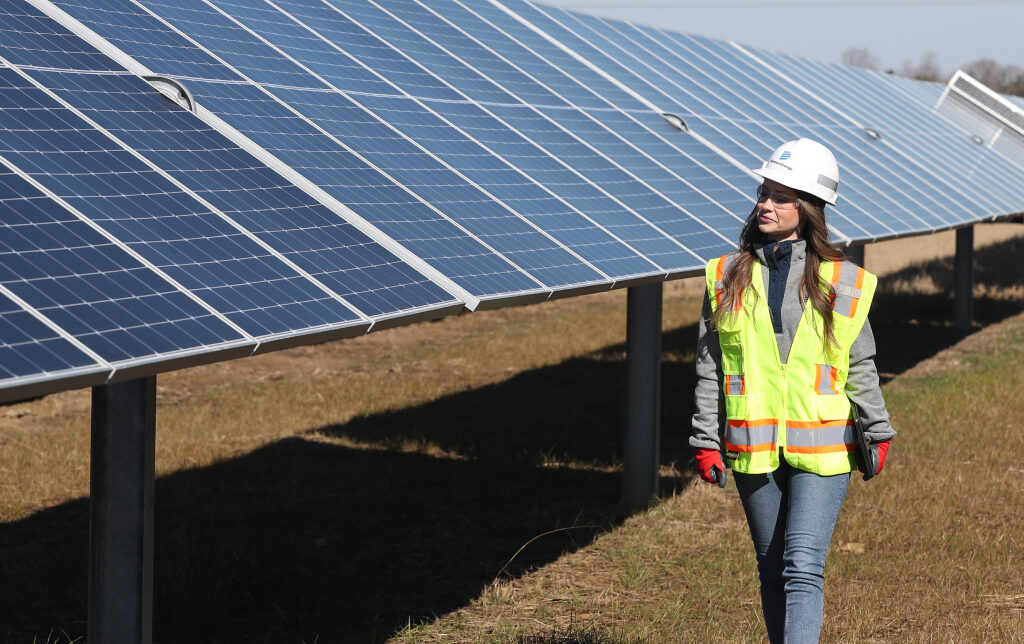
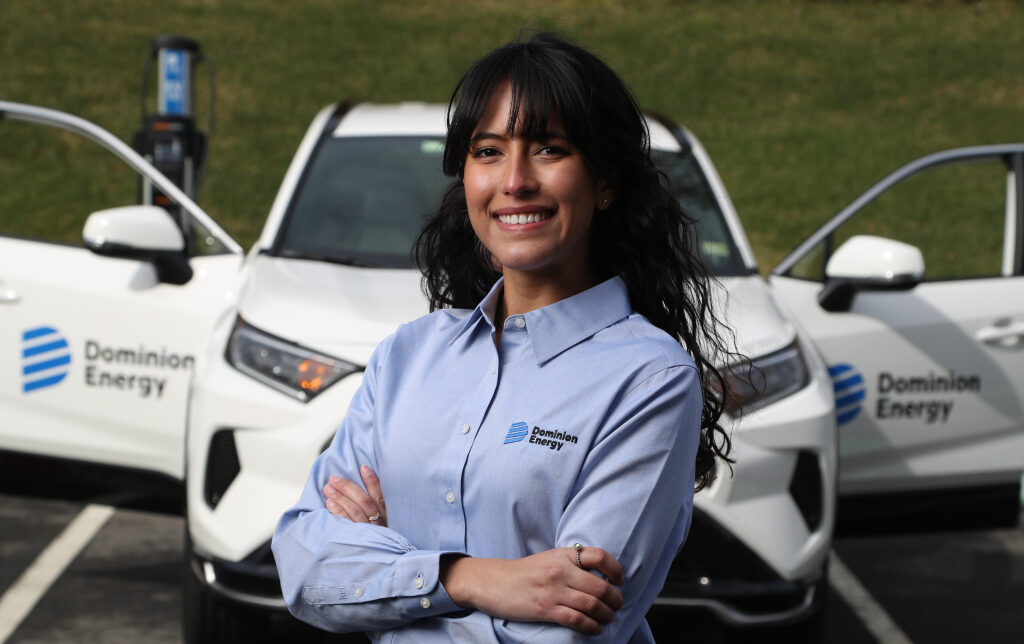
2. Design icons, infographics and illustrations to elevate sustainability/ESG storytelling.
Utilize conceptual illustrations or infographics to help explain complex ideas, processes, and actions that are hard to capture in photography or text alone. These visuals increase understanding and reduce dense text that few will want to read. Icons can encapsulate and reinforce ideas quickly. By using data visualization techniques, you can effectively communicate complex sustainability stories, processes, and performance data in a way that is engaging and easy to understand.
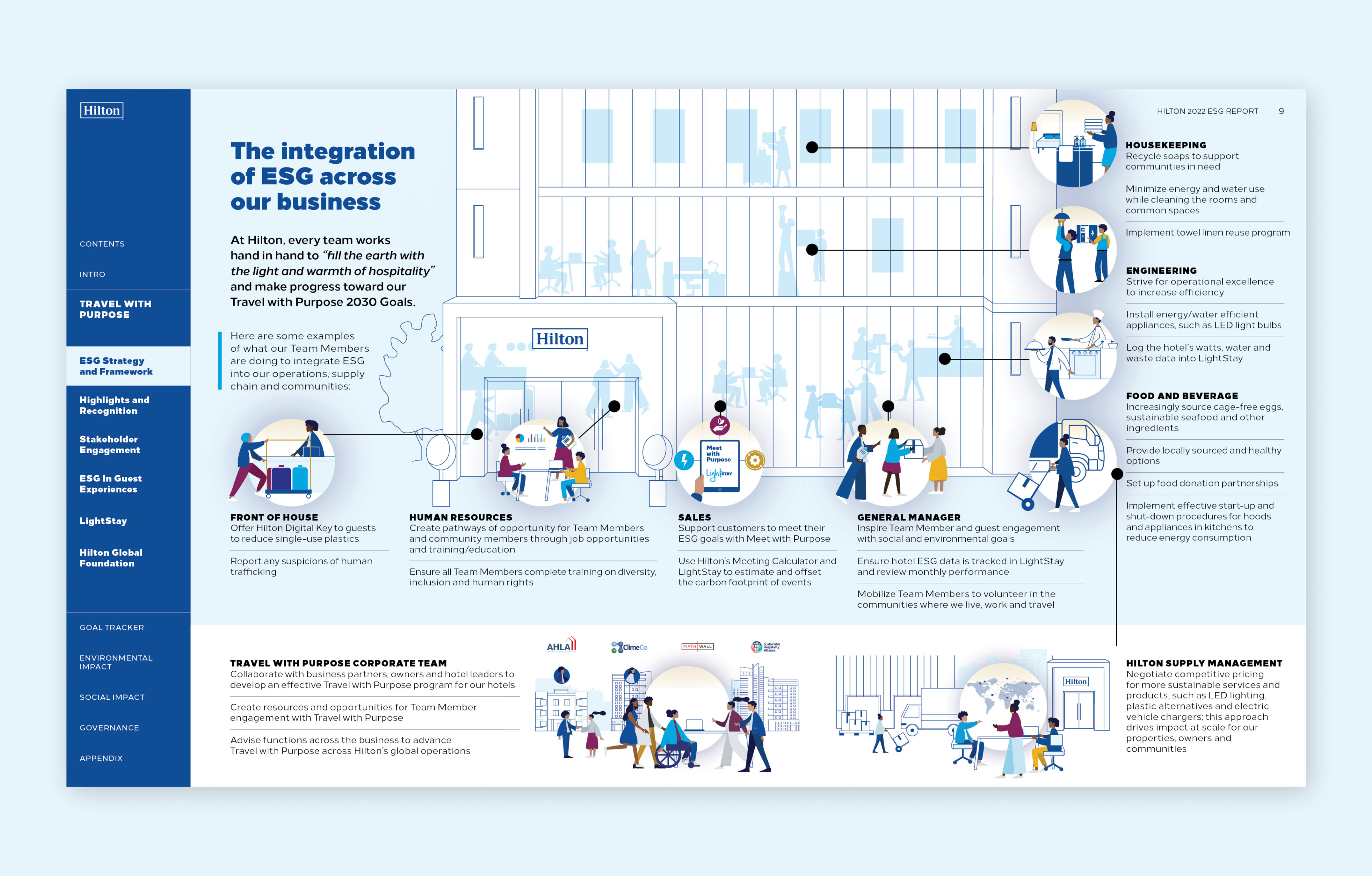
3. Capture your people to humanize your company.
Featuring your own people will help engage employees in building your culture of sustainability and put a human face to your company for stakeholders. Real people connect to your content in ways stock photos can’t. And, these photos may already exist. Ask various teams if they have images from company-specific interactions, even if taken on a cellphone — community events, facility tours, awards presentations, and team building events are an easy place to start (but don’t forget photo releases). Layer in professional images — marquee moments, events, and teams — as well. Be sure to represent a diverse range of people and perspectives.
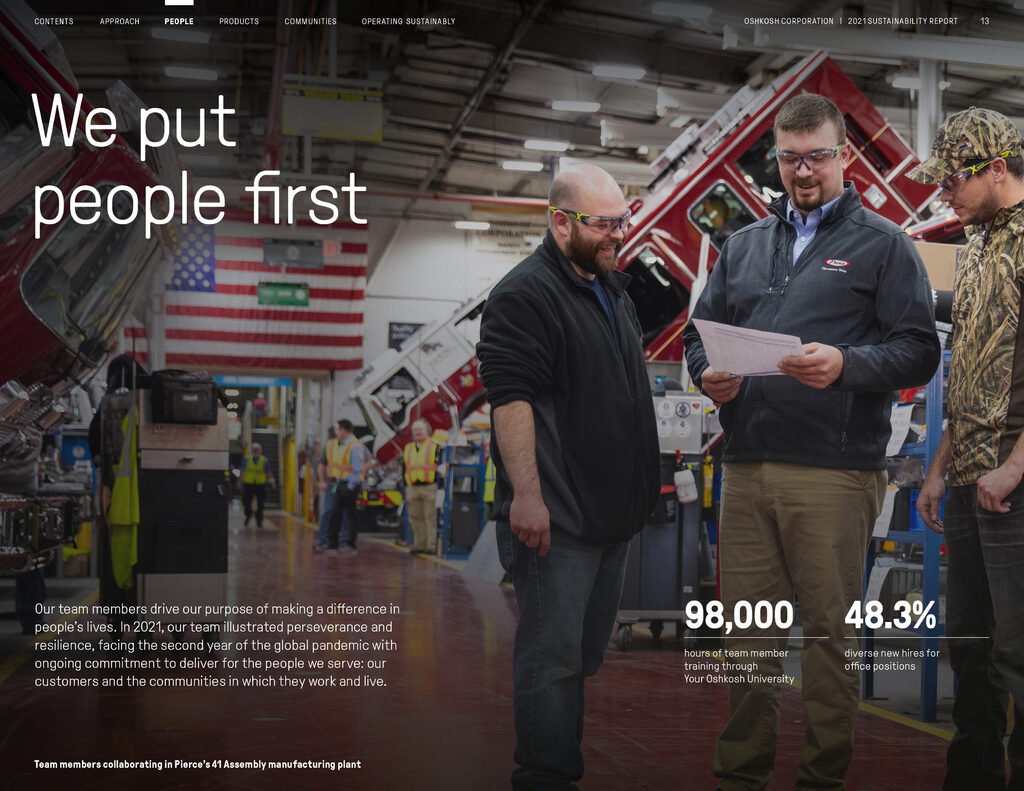
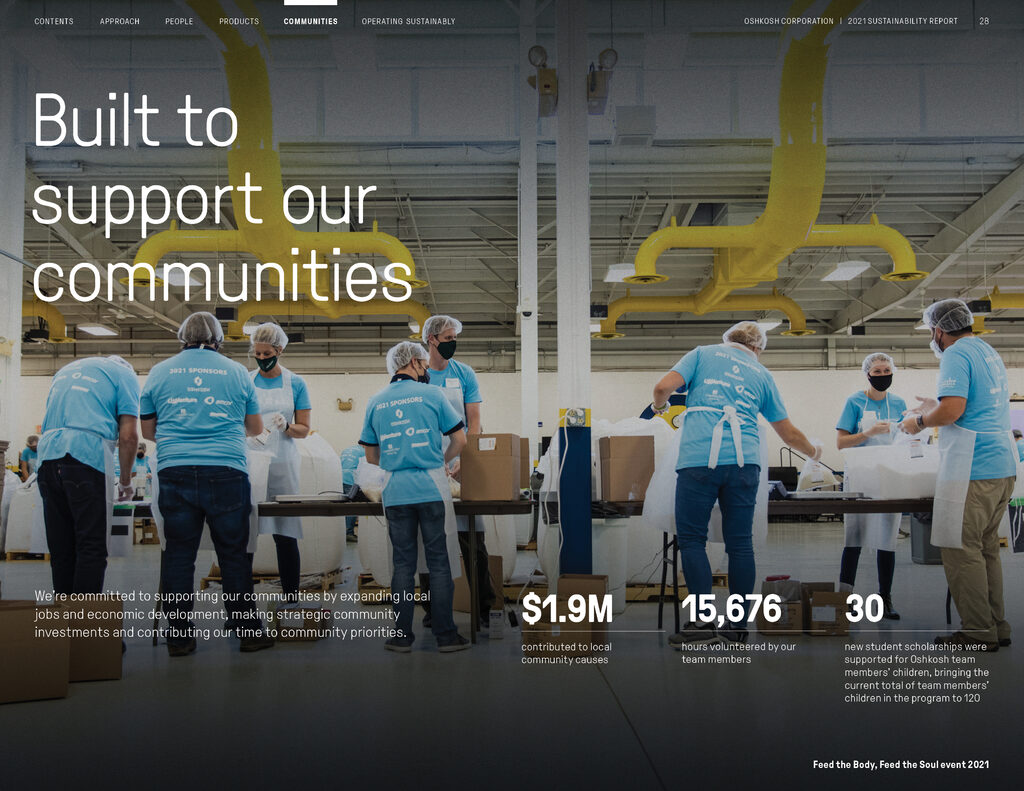
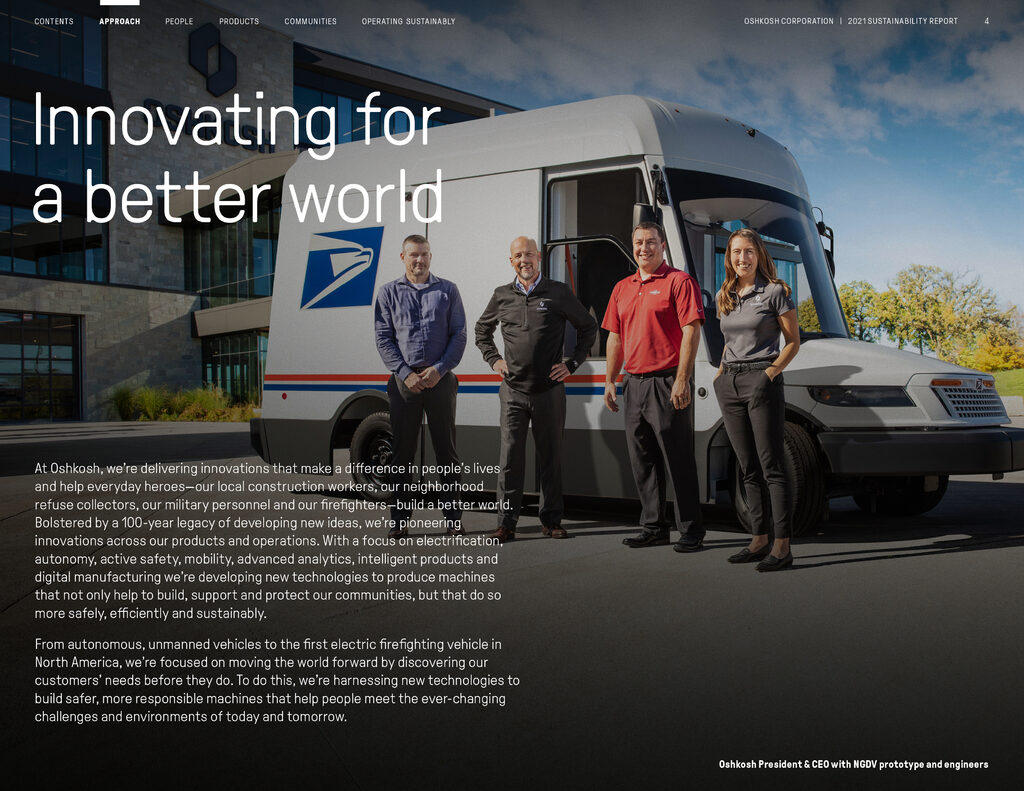
4. Use stock imagery as a fallback.
Stock imagery can help save time and money, but, these images may appear in peer or competitor materials so use as sparingly as possible. Avoid visual clichés (seedling anyone?), choose high quality images that have a visual appearance in line with your own photos. Images should enhance content, not detract from it. If possible, consider treating the image in a way that makes it uniquely yours.
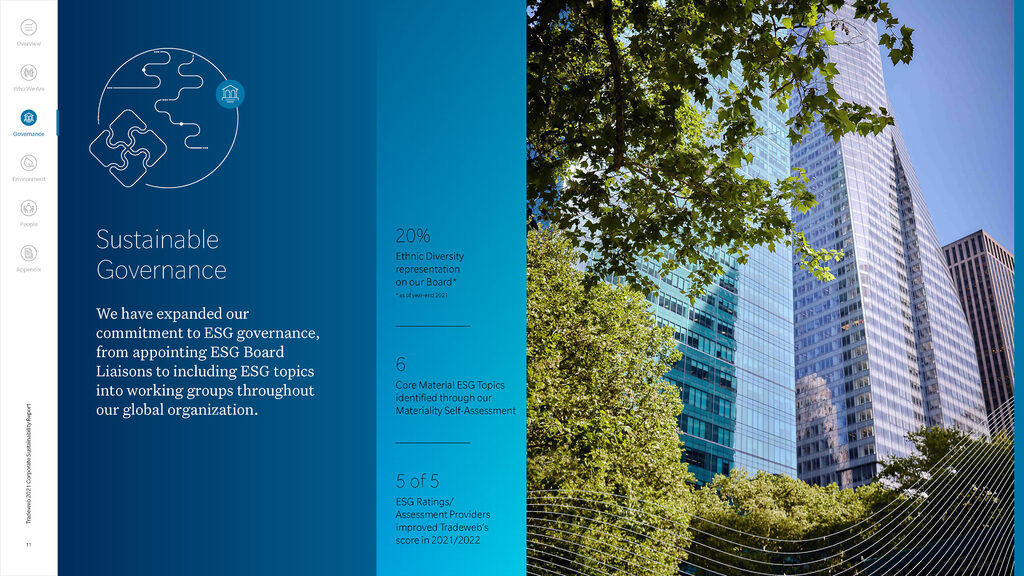
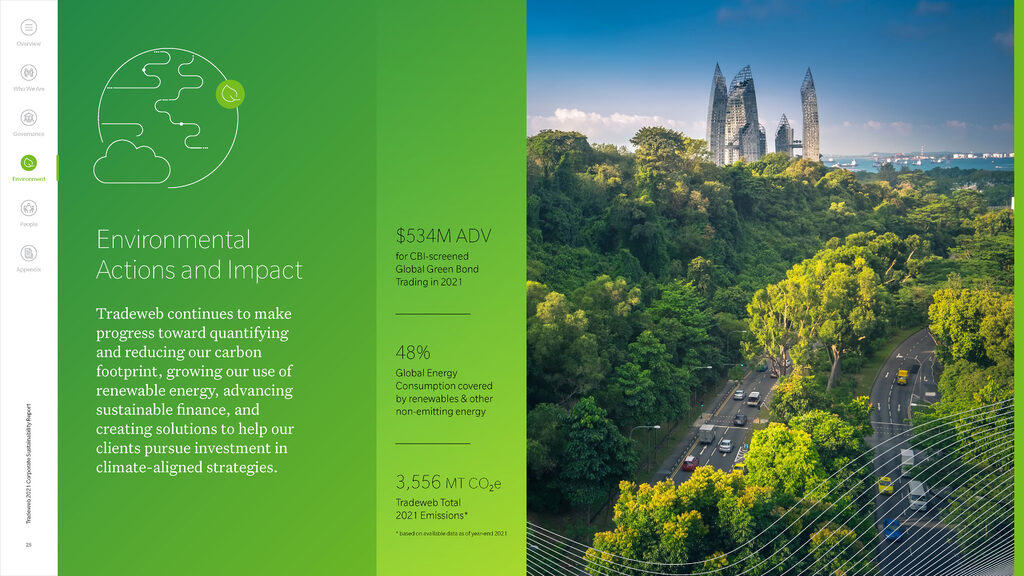
The Takeaway
Over time you will amass a collection of visuals that are proprietary. This image library will need to be maintained, expanded and refreshed, keeping in step with your company’s ever-evolving communications. Visually distinct assets will help differentiate, and brand, your communications no matter the channel. The visual consistency reinforces your messages, ensures authenticity, and builds trust. It can be a virtuous circle.
Note on managing releases, copyright and licensing: Using images without proper photo releases, copyright, and licensing can result in legal and financial risks. It’s important to ensure that all images used in sustainability communications are properly licensed and that the company has the necessary rights to use them.
Get guidance: How Ideas On Purpose can help
If you find yourself struggling to see how your company can bring its visual sustainability narrative to life, consider engaging an expert. Visuals of all kinds are integral to the work we do. Check out the award-winning and stakeholder-pleasing sustainability reports and communications IOP has created — and email us to get in touch if you need help with yours.
Cover photos: Unsplash